“When you judge another; you do not define them, you define yourself,” - Wayne Dyer
Cardinal Facts of Super ‘Powerdom’
There have been many global powers in the history of mankind, Chinese and Indian empires being among these. In the era contemporary, the world has seen the rise of United States (US) and the erstwhile Union of Socialist Soviet Republics (USSR) to that status, before the collapse of the latter caused the former to be left as the sole claimant of that field. Presently, there are suggestions - no doubt duly substantiated by facts, figures and factors - regarding the rise of the People’s Republic of China (PRC) to break into that field. In fact, there are adequate reasons to profess that the PRC has already established its control position in the global order, and what is left is for it to consolidate and expand its centrality over regional and international affairs.
There is however one key attribute working against China’s course to stardom: candidature for super-power status does not gel with irrepressible malevolence towards one’s fellow, if humbler, cohabitants of the comity of nations. Political and diplomatic malevolence, even if sustained by overwhelming military power, does not further the cause of leadership at regional or global stage. In fact, more often than not, the said humble cohabitants, to save themselves from doom, find no option to bury their mutual differences and forge alliances to resist. That indeed is a lesson glaring from the history.
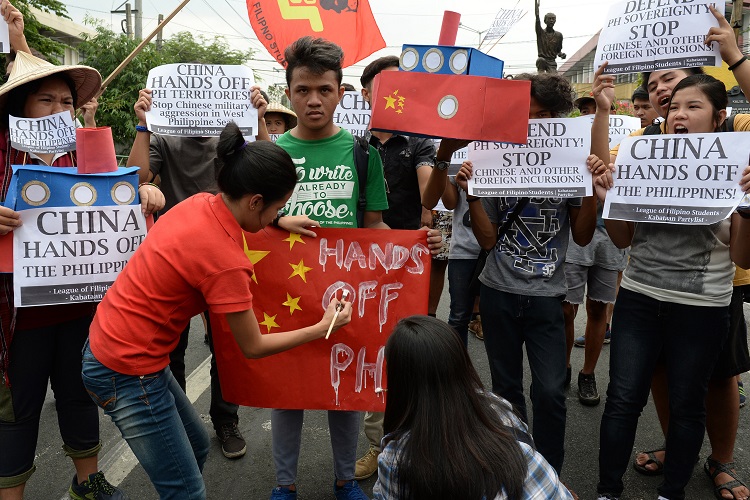
So Points the Past
No doubt, in their time, the Chinese, Indian, Roman, Ottoman and British Empires had indulged in massive scales of destruction and usurpation. But when viewed in the backdrop of the time span, geographic spread and contemporary political culture, such acts of malevolence stand out as occasional exceptions; the super-power’s subjects as well as the neighbours of its realm were generally satisfied. This is a fact well demonstrated by the rise and reign of the USSR when its beneficiaries within and without had far outnumbered those who rhetorically painted it as an ‘evil regime’. Indeed, searching one’s soul, it is hard to deny that many of the Asian and African nations, including India, owe their security and development to the benevolence of the USSR. Even if those acts of benevolence had been motivated by the super-power’s vested interests, that cannot take away the credit due.
The latest example of that ordination are indicated by the policies pursued by the current super-power – the US. Even it may be fashionable, and necessary in some ways, to chide the US, in company its allies, for ‘interference’ in regional matters, violation of international norms of diplomacy, and contravention of the principles of sovereignty, there is also the fact that support for such interventions have been substantial within the subject country as well as among the global community. Indeed, ‘meddling’, ‘interference’ or ‘intervention’, whatever be the term preferred, there are many succours brought all around by such super-power acts, the beneficiaries of which include the loud lamenters of US highhandedness. Recovery from the World Wars, and protection from oil blackmail, trade exploitation and military aggression are some examples of the super-power’s direct or indirect benevolence to the mankind. Arguably, there are also the instances when the super-power alliance could rescue peoples from the doom of demonic dictators. Adding the US’ attractive ‘soft power’ – educational, professional, scientific, medical and cultural offerings – to its ‘harder’ variety, Japan, Taiwan, Vietnam and Southeast Asia, arguably even Afghanistan, are some prominent beneficiaries of super-power acts, while the list of secondary ones is long – and rather interesting to read.
In contrast, there have emerged scores of powers who had the potentials to rise to the super-power status, but failed to secure that end. Invariably, these failures had been triggered by, one, internal divides, and two, rise of alliances of the tormented states against predatory instincts of a wannabe hegemon. In sum, it is a lesson from the history that the ‘spectre’ wielded by a super-power must be built with strong fibres of morality - recourse to occasional nasty machinations of the Mandarin, Chanakya and Machiavellian variety in pursuit of muddy aspects of statecraft notwithstanding.
In that context, there may be no instance of the PRC bringing any succor to any among the comity of nations. Rather, it has created problems for most its neighbours - South Korea, Indonesia, Mongolia, Vietnam, Myanmar, Taiwan, Tibet and Japan being its prominent targets at one time or the other 1. India has been China’s special target; besides imposing a war and boosting Pakistan’s pathological animosity, it has promoted insurgency in India’s North East for over three decades, and would do so again if that suits. Conversely, having been problematic for stable and peace loving nations, it has found common cause with rogue states like North Korea, Pol Pot’s Cambodia, many of the African despots, and of course, Pakistan. It is strange that China, a repository of five thousand years of state-wisdom, has chosen a path to super-powerdom which requires it to harass those who wish to be left alone to pursue their civilized aspirations and collaborate with those who are relentless in snapping at other’s peaceful existence.
A Case of Inveterate Compulsions
China’s current regime assumed power in 1949 after a long, bloody civil war. The communist leadership at that time was made up of highly astute strategists who, while possessing innate intellect and remarkable attributes of leadership, were nevertheless a coterie of earthy, tough and ruthless men. To survive, fight and win, these leaders, by their exacting experiences, had to be entirely consumed by cunning, duplicity and unscrupulousness. In any case, even in their traditional statecraft, the Chinese theorists have eulogised such attributes as marks of ruler’s wisdom - just as the ancient Indians did, but then the Indians had lost that wisdom by the end of the first millennium.
Having captured power, an instinctive brand of predatory ideology compelled the communist leadership of China to adapt to a statecraft that called for decimation of divergent political systems. That call was met by the recourse to an ever-expansionist mission, both in terms of ideology and territory. Instigation of bloody de-stabilisation all around in the neighbourhood and using intemperate terms to give vent to its hate of the “running dogs of imperialism” and their “bourgeoisie puppets” as they put it, had been a visible manifestation of that inveterate instinct. It was that characteristic which drove the communist regime to deceive the Tibetans on the ‘17 Point Agreement’, fool the Indian leadership 2 till, as Zhou En-lai remarked, the time turned “ripe” to implement the next phase of its expansionist scheme over Indian territory, go ahead with laying incremental territorial claims against all its neighbours, and finally, claim sovereignty over the common waters of the China Seas3.
As the Communist Party of China (CPC) stabilised its hold over the Chinese mainland and its climb along the path of global status commenced in the late 1990’s, one would have expected it to exhibit more appreciation of the regional community’s concerns and aspirations. The turn, however, has been the other way round. Here, the country caught at its expansionist cross-hair is ‘cautioned’ to restrain from ‘making trouble’ by seeking any sympathetic friend’s help, and is ‘called upon’ to submit in ‘solving’ contentious issues ‘bilaterally’. Indeed, the advice would be apt but for the proviso that the ‘solution’ would have to be according to China’s natural and ‘historical’ right to its arbitrary interpretation of what must be accepted as ‘indisputable, fair and just’.
It is bizarre indeed - a wolf cautions a lamb against bleating and submit to one-to-one discussion over the terms of its being devoured! That indeed has been the case with China’s all those purportedly ‘settled’ border disputes with most of its neighbours, which remain in latent but serious contention. As in the case of Sri Lanka, Mongolia and Philippines, even economic engagements are no less one-sided. One result of that kind of revisionist ideology is that the PRC has found camaraderie with states as rogue as the North Korea and Pakistan, besides among many other autocracies from time to time, thus making the region around it a dangerous place to live.
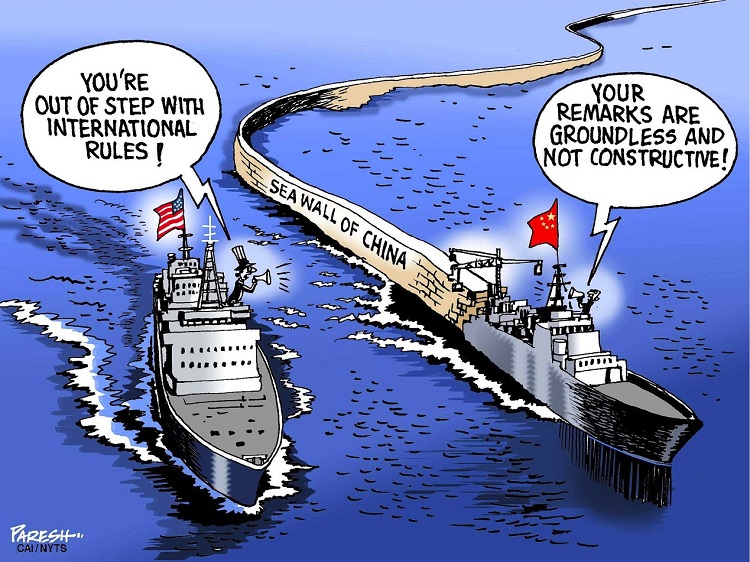
China’s India Aversion
The Mao-Zhou’s generation of communist leaders’ deep distrust of democratic India was rooted at India’s significant size, international standing and strategic potential. That, in their perception, could not but pose a challenge to China’s supremacy ordained, Nehru’s past hobnobbing with their bête noire, Jiang Zhongzheng (Chiang Kai-shek) and the Americans adding to the distaste. Well, in the Asian region, India possessed the second most influencing potential after China, albeit a distant one. But nevertheless, as it happens between numbers 1 and 2, the latter’s progress invariably triggers apprehension and jealousy, and therefore the potential challenger needs to be ‘kept in its place’ lest it topples the former. The idea of peaceful co-existence of two well endowed neighbours, a romantic dream that the Indian leadership had sold itself to, was unthinkable in Communist China’s reckoning - as indeed the eternal lessons of statecraft, as professed by Chanakya, point out. Instead of thanking their stars for having a benign, passive, soft and vain neighbour, the Chinese leadership just could not help but colour the Indian leaders with their own fiercely suspicious and combative perspective. Indeed, China’s intuitive aversion to India was caused by the Chinese leaders viewing India in the backdrop of that instinct. And here, as we shall see in later paragraphs, they committed a series of mistakes humungous - and in perpetuity, 65 years to date and counting – a mistake that could one day sink them.
In defence of Communist China’s one-sided aversion of a democratic and rather feisty India in the 1950’s, it may be stated that in that era, the depth of Indian’s captivation to the notions of ‘peace’, ‘non-alignment’ and ‘soft power’, and its pathological military-wariness had not manifested to a degree that the hardened leaders of China, having had to survive through cunning, opportunism and deceit, could feel safe and smug in its company. To that extent, the communist leadership, with Mao Zedong at the lead, had adjudged their Indian counterparts to be as hegemonic and expansionist as they themselves were. Given their cultural attributes and historical experiences, the Chinese could hardly be blamed for reading the Indian leaders wrong, particularly as it was unthinkable that a nation of India’s potential would be led by leaders so innocent of the shady nuances of statecraft as to fail to see danger building up. India was therefore seen as a threat to the Middle Kingdom’s ‘naturally decreed’ supremacy.
Notably, in Chinese stratagem, animosity and alliance are interchangeable - just as it was in ancient Indian practice. But perhaps the Mao’s generation of leaders failed to foresee the extent of permanent alienation they bought by turning its most visible admirer into an enemy by what was, and would continue to, rankle India as an act of unforgettable and unforgivable back-stabbing – the betrayal of 1962. Indeed, the hoary goodwill of China that was displayed in Indian grandma’s tales, comic books and grateful Indophiles - who could reconstruct India’s glorious past from the Buddhist treatise copied by Chinese scholars - was swept away by that act of ‘great self-goal’. That, and its treatment of the Tibetans made the Communist China to be known in the rest of Asia as an untrustworthy regime.
India-aversion has caused the Communist China to adopt a path since 1963 that obliges it to heavily and continuously invest on a country like Pakistan4. Not that China has spared any effort to alienate the other neighbours from India, but deep rooted cultural, geographic and economic India-centricity of these neighbours has come in the way. Whereas in Pakistan it could find a pathologically obsessed client who could be instigated to subordinate itself just to satiate its innate anti-Indian (read ‘Hindu’) animosity. Doggedly pursued in typical Han imperialist fashion over the past six decades or so, that collaboration has taken China to arm and nuclearise Pakistan, proffer economic sops and supply ‘counter-India’ military-technologies to that client state, and support its unabashed sponsorship of terrorism - policies that drag the emerging super-power to the level of a regional usurper, a de-stabiliser an endorser of terrorism.
That, as exemplified earlier, can hardly be the attributes of a super-power.
Instinct over Wisdom
Intent on undermining India’s position in as many ways as it could, China landed up taking decisions it would have considered unthinkable when in control of the pristine Chinese wisdom. Nuclearrisation of Pakistan and Korea are two landmarks of that self-infliction, wherein China gave up its unchallenged nuclear supremacy to share it with clients irresponsible, offering them the opportunity to defy their supremo whenever they so willed – as indeed North Korea has already shown. In that process, China also forced its unilaterally identified competitor, India, to militarise and nuclearise, thus creating another fulcrum of China-wary South Asian power. There might hardly be any instances of such ‘mother of all’ policy goof-up made consciously by a great country that aims at rising to super-power status. Further, there may perhaps be no example of consistent pursual of such goof-ups.
Remarkably, by its massive range of investments made on Pakistan’s legally and illegally controlled territories in the form of the China Pakistan Economic Corridor (CPEC), China is on its way to add another set of compellence upon itself – it cannot afford to allow Pakistan to sink. As conceded by many Chinese policy-makers, China’s that burden is rendered more excruciating by the way the Pakistani people run their self-destructive affairs. And that contradiction could be the harbinger of economic and cultural conflicts, ominous fallouts of which would not spare the entire region. Conversely, the question remains as to will it be feasible for China to change track after travelling so far out in investing on reliability of an ungovernable nation that Pakistan has turned into. Given the depth of China’s dependency on Pakistan’s military and nuclear arsenal which it has built up to keep India in check, its economic dependency on success of the CPEC, and the uncertainties of dividends accruing from purchasing friendship with India’s other neighbours, that question must be a matter of substantive debate and analysis.
By its deliberate doings, China, a traditionally acknowledged repository of state wisdom, seems to have entered into a hole from which it might be too late to wriggle out.
Poking a Reluctant Elephant
China-Pakistan ‘friendship’ is actually a patron-client relationship – till, in the coming future, the latter lands up vitiating it. It is a friendship that is stated to be ‘higher than the Himalayas and deeper that the Seas’; ironically, both these destinations are rather injurious to happy living. Having gone deep into the said hole, China has no option but to continue even if it starts hurting. That is so when the global community finds China protecting Pakistan’s sponsorship of Islamist terrorism, blocking the 1.3 billion Indian’s prospects in any manner it can and inaugurating construction projects on Indian territories possessed illegally. The charade of Sino-Pak ‘friendship’ turns really ironical when the People’s Liberation Army (PLA) activates in demonstrating its muscle on the Indo-Tibet Border just to assuage Pakistan’s consternation on being named. That indeed is a case of the tail wagging the dog, a patron sullying its world image to humour a recalcitrant client5.
Having turned the goodwill of the second largest part of the global population thus, China finds India’s defensive responses to its unilateral animosity rather ‘unacceptable’. Preposterously, it lets no opportunity pass to ‘advise’ India to happily give-in to Chinese designs, as indeed to the demands of its sidekick. In pursuance of that disoriented policy, China finds discomfiture with India’s all-inclusive schemes of developing the North-South and West-East transportation corridors. It is similarly apprehensive of the trilateral transport and transit venture with Iran and Afghanistan with Chabahar Port-Roads network as its fulcrum. Even the umbilical cultural and economic understandings among the sub-continental neighbourhood – Sri Lanka, Nepal, Bhutan, Bangladesh, Afghanistan, Myanmar, and the South East Asian nations - rile China no end. Modest as these ventures are in comparison to its massive undertakings, China yet contends India as a potential leader of China-wary nations and a threat to its hegemonic dream.
Indeed, the PRC’s recent reaction to the inauguration of the ‘India-Afghanistan Dedicated Air Corridor’ is illustrative. In this instance, this recourse, which has been forced upon India by Pakistan’s stubborn refusal to grant land transit for trade between India and Afghanistan, is described as India’s “stubborn geo-political thinking”! Next, in exposing its disoriented thinking, the PRC advises India to buy passage through Pakistan by compromising with Pakistan’s Kashmir agenda!! Meanwhile it sends its Foreign Minister, with Pakistanis in tow, to Afghanistan to find a meeting ground with Taliban; that is even when Pakistan has long lost its control over Taliban, and as a repeat example of Pakistan-China ‘friendship’, it is the Taliban which dictates to Pakistan.
Presently, Indian Prime Minister Modi’s confabulations with the US has raised bogey in the Chinese mind. Riddance of that bogey however cannot be accomplished by India-baiting in concert with an accomplice who lingers at the margin of being classified as a ‘failed’ state. That riddance would come when regional countries are not so tormented as to drive them into strategic alliances against the unreasonable hegemon and a compulsive tormentor.
Tumult Ahead?
China’s resolve to continuously undermine Indian interests does not seem to ebb. Rather, as India rises to the global stage, its aggressive affliction seems to be rising in reciprocal steps. Investments and technical assistance, ostensibly against specified and unspecified pay-back of ‘reciprocal’ concessions, that China offers to countries all around India is a part of that intent. Machinations to stall India’s ready acceptance at the United Nations, global financial institutions, nuclear dealership and energy groupings are the second part of that intent, while regularly enacted military muscle flexing and diplomatic affronts depict the third part. Thus asphyxiating any chances of resuscitating of the old goodwill it had once enjoyed among the Indian folk, China has done everything to alienate into deep distrust arguably the largest market in the world and a sixth of the entire humanity.
But of late, there are manifestations of certain positive aspects to China’s India-linked interests. Economic uplift being linked with the survival of the communist regime - which incidentally is the PRC’s ruling objective - a stage has come when there are indications of a desire to engage with India – the huge Indian market to be precise. However, even if China wants to harness the long term benefits of establishing close and confident relationship with an emerging India, it would require retrieval from its past miscalculations, the economic and political cost of which could be tough to handle. Further, it is argued that China has gone so far in its unilateral aversion to India that it is well neigh impossible for it to retract, even if she finds very sensible reasons to do so6.
It follows therefore, that though there may arise some inclination to make amends of its past policies, any hope of the PRC being able to change track in the near future from the mess she has headed into, as stated earlier, would be somewhat impractical. What actually can be achievable is to reform and refurbish the PRC’s grand economic – and political - initiatives to make these more inclusive, friendly and accommodative to Indian concerns. China has to appreciate that its westward oriented ventures cannot come to full fruition by alienating, even excluding, India – the geography and history of the region discounts that.
PRC’s current efforts, in all its sincerity, to peddle the CPEC, the larger OROB and the Maritime Silk Route (MSR) may be tested against that premise. Propagated alongside non-exploitative trade and adoption of an inclusive fiscal agenda, easing on diplomatic affronts, and above all, image building, to be seen as a responsible, even benign brother, may be a good way for the PRC to start along the road to super-powerdom.
Endnotes
1. The history of Communist China’s subterfuge of most of its neighbour’s sovereignty is long and disconcerting. Presently, its policy of instigating and sustaining internal insurgencies seems to have been oriented to territorial and economic usurpation, visible or latent.
2. The extent of deceit and Indian gullibility may be gauged by the fact that the invading People’s Liberation Army (PLA) in Tibet received its supply of rice through Calcutta Port!
3. China’s expansionist mission is truly exposed by its capture of Tibet, where under no stretch of imagination, plausible or contrived, can China claim sovereignty over a nation so distinct geographically, culturally, religiously, linguistically and in every other conceivable measure. Indeed the Han’s irrepressible instinct for usurpation is confirmed when both the Communists and the Republicans come together in propagating that agenda.
4. That was the year when Pakistan’s dictator, Ayub Khan, ‘ceded’ a part of the Shaksgam Valley of the Indian province of Jammu & Kashmir to the PRC.
5. The PRC blocks United Nation sanction on the terrorist Azhar Masud. It is also stubborn against the rest of the member nations’ desire to admit India into the Nuclear Supplier Group (NSG) just as a ploy to elevate Pakistan, an unabashed proliferator, into that Group. Further, it is investing in mega projects under the scope of the CPEC in Indian territory occupied by Pakistan while blocking World Bank funding development projects in Arunachal Pradesh. It is also noticeable that there exists a connection between Pakistan getting a diplomatic stick from the world principals and the PLA’s intrusions across the Sino-Indian Line of actual Control.
6. In Jun 2017, in sequence to the declaration of greater US-India strategic partnership and castigation of Pakistan’s terror links, China the friend decided, unilaterally and as a matter of its ‘rights’ of course, that a part of Bhutanese territory (Dokalam Plateau) was in fact a ‘historical’ and ‘undisputed’ part of China. It then went on to threaten India with 1962-like consequences, just because India would not let up in its commitment to Bhutan’s security!
Image Sources: 1 http://www.japantimes.co.jp/news/2016/09/03/asia-pacific/asean-china-to-adopt-communications-protocol-to-ease-tensions-in-disputed-south-china-sea/
2 http://www.thedailybeast.com/us-sends-carriers-to-chinas-crimea
3 http://www.japantimes.co.jp/opinion/2015/06/09/commentary/japan-commentary/managing-disputes-china/




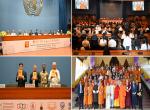
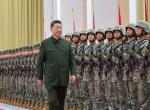
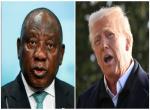


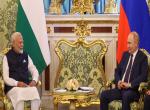

Post new comment